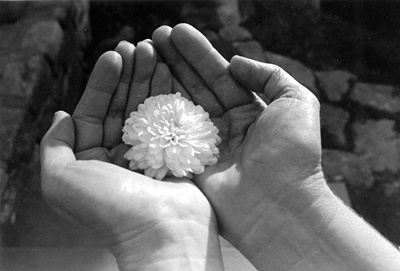All Nonfiction
- Bullying
- Books
- Academic
- Author Interviews
- Celebrity interviews
- College Articles
- College Essays
- Educator of the Year
- Heroes
- Interviews
- Memoir
- Personal Experience
- Sports
- Travel & Culture
All Opinions
- Bullying
- Current Events / Politics
- Discrimination
- Drugs / Alcohol / Smoking
- Entertainment / Celebrities
- Environment
- Love / Relationships
- Movies / Music / TV
- Pop Culture / Trends
- School / College
- Social Issues / Civics
- Spirituality / Religion
- Sports / Hobbies
All Hot Topics
- Bullying
- Community Service
- Environment
- Health
- Letters to the Editor
- Pride & Prejudice
- What Matters
- Back
Summer Guide
- Program Links
- Program Reviews
- Back
College Guide
- College Links
- College Reviews
- College Essays
- College Articles
- Back
Mary Rowlandson
If a person is walking down a trail and sees an eccentric stone, he might pick it up, take a look at it, and throw it back into the woods. This action doesn’t disturb nature. If he sees a small turtle, he might watch it as it hides in its shell, and nature is again, undisturbed. A deer crosses his path, he calls out to the deer, and it darts into the woods never to be seen again, and nature, left undisturbed. He sees a blue object lying in the grass, and as he walks faster towards the grass, he notices it makes out the shape of a wildflower of intricate design, made by a meticulous Creator. Instead of walking by, he bends down and places his hands on the wet soil. Instead of merely admiring, he puts both sides of his hand on either side of the flower, and with an insatiable thirst, he slowly traps the roots and digs into the ground. Instead of leaving nature undisturbed, he rips up the wildflower, taking her as captive.
Uprooted from Lancaster by the Indians, Mary Rowlandson refused to wither away. She grew dependent on them, yet with no trust to place in them. She loathed them. She hated them. She thanked them. She praised them. She felt betrayed by the inconsistencies in their actions toward her, yet she couldn’t make it back to see her family without them sparing her. She was a wildflower, inconveniently placed in a vase of water. She was a wildflower, replenished when and if the savages chose to do so.
In 1620, after the arrival of the Mayflower, the relationship between the established Natives and the British newcomers was uneasy, and that is putting it lightly. The major source of tension between the two groups was their different approaches to the land. While the Natives felt like the British should be thankful for them sharing their resources, the British believed in treaties and individual ownership of land, not co-ownership.
While the Natives didn’t mind sharing, they did mind uninvited houseguests digging through their pantry and setting their rules, so they decided that the fun was over. No more playing house for them. They revolted. They burned villages. They took captives. The catch about the captives was that they could be traded for ransom in the form of money, weapons or provisions so this idea about the possibility of being spared and traded in is what gave Mary Rowlandson hope. Her hope gave life to her fibers and carried her throughout the hard times. She turned to God and his providential will. She let him guide her path and lead her to safety. Through time spent with the savages, she used the circumstance she was thrown into and made the best of it. Instead of shutting down or giving up, she showed a stronger side of herself she might have not even known existed. In the end, her memoir people read about today, captures the joy she felt when she was reunited with her family and the peace she felt when she was able to continue the life she once lived.
If someone were to examine the soil where she is now planted, they may notice the unevenness in the bed of soil or that she has a tear in her stem. Maybe they would compare her to another flower and wonder why Mary isn’t exactly the same. Or maybe, just maybe, they would see that through faith in God, she was replanted even deeper, her roots made even stronger. They might see a woman who never lost sight of where her life came from or who blessed her to live it. If they saw that when they looked down at Mary, then they would decide that nature is at its best when it is tested, and that nature is at its best when it is disturbed.

Similar Articles
JOIN THE DISCUSSION
This article has 0 comments.
